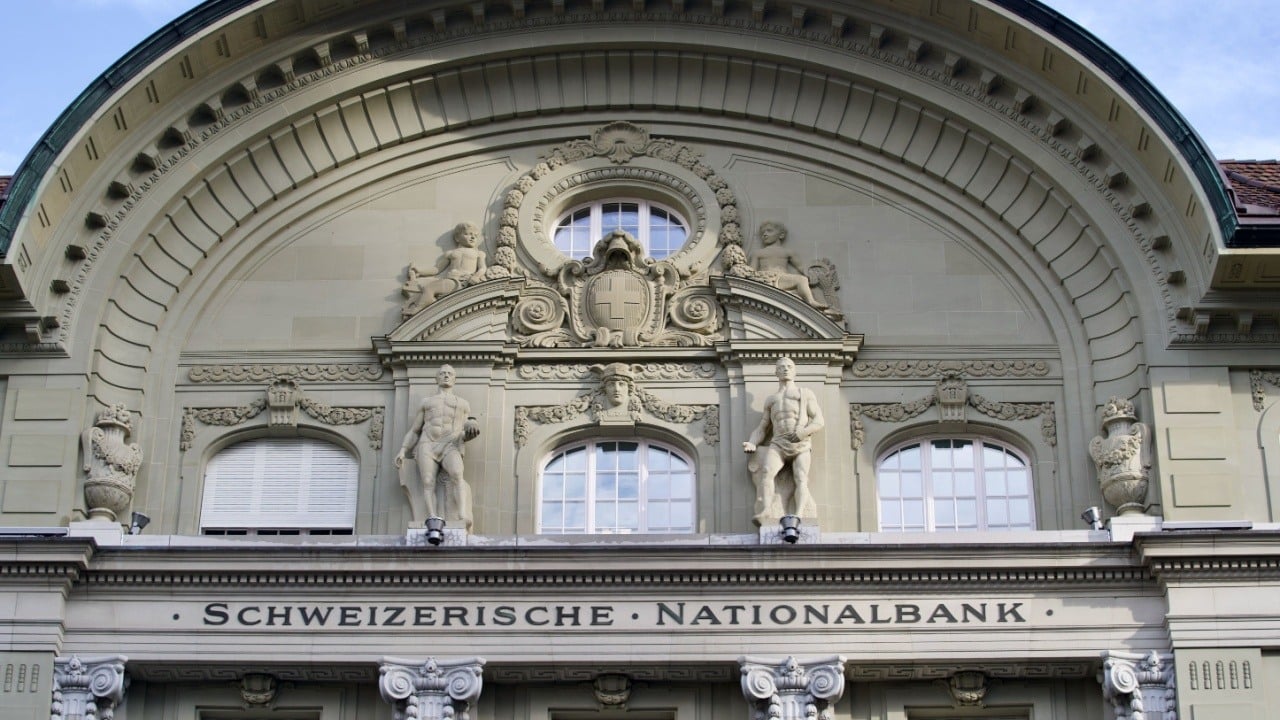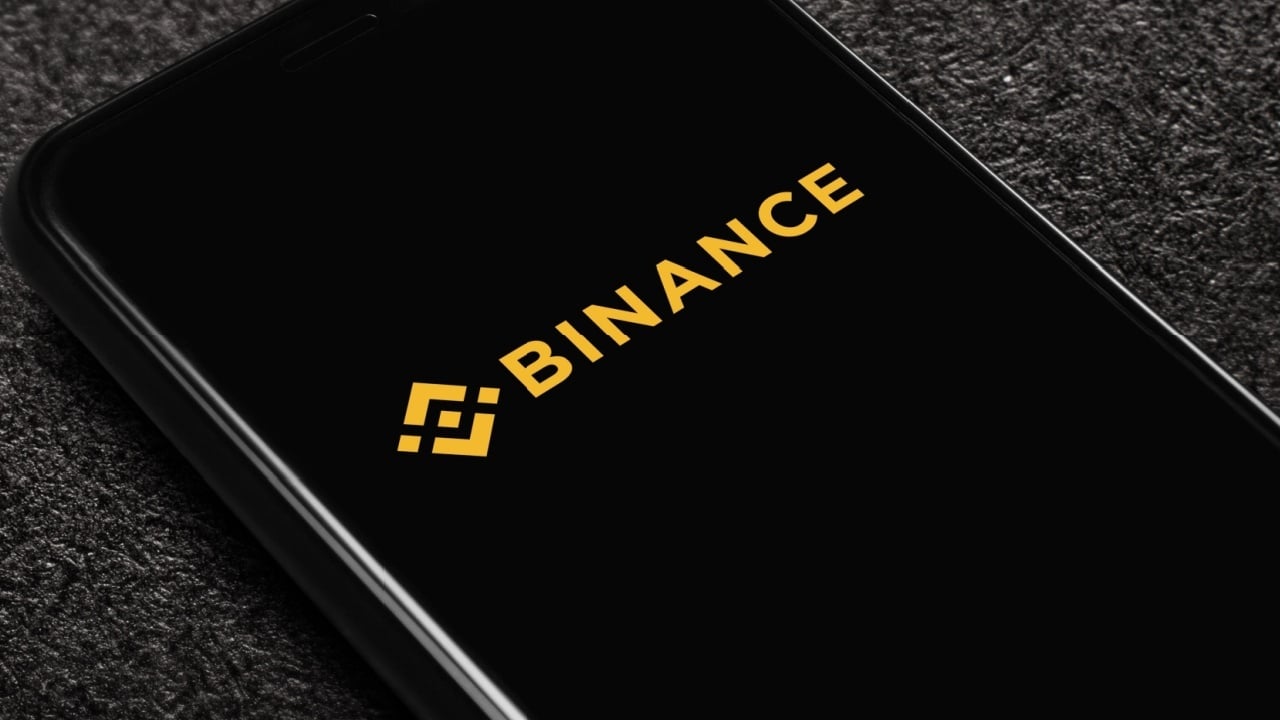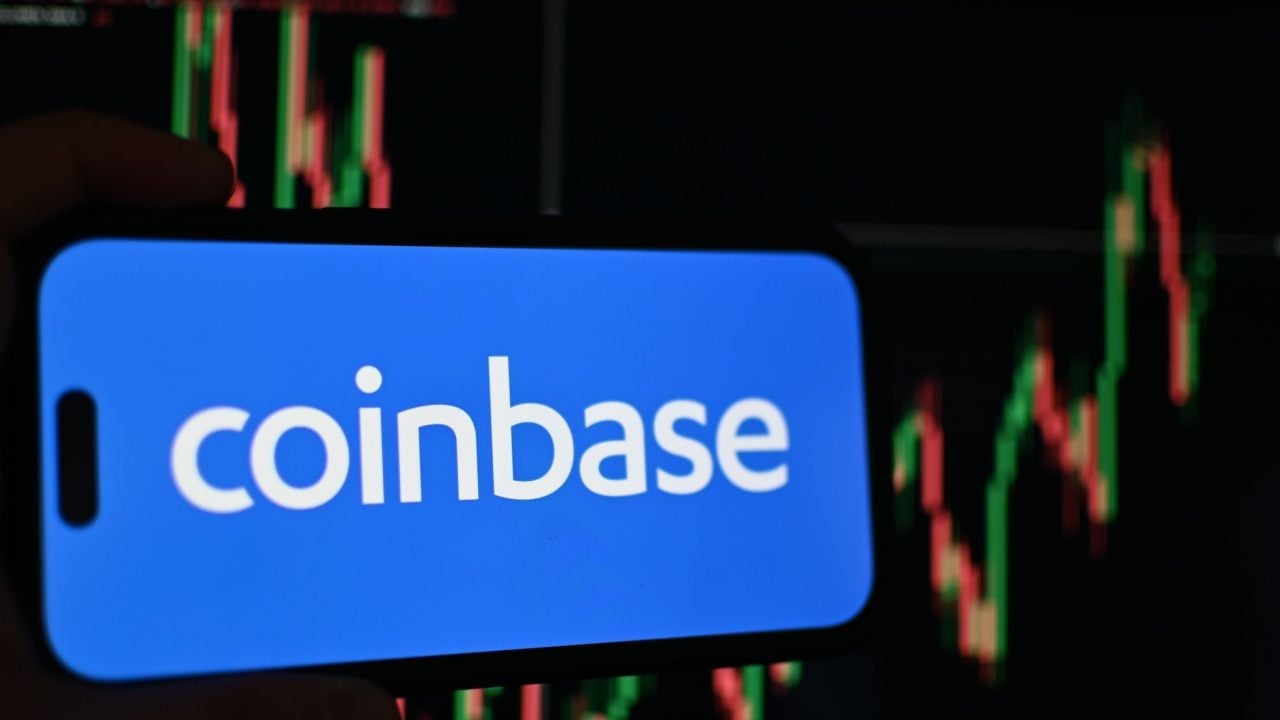Bridging the Gap: Time-Bound Access in Event-Driven Architectures (Part 1 of 3)
TL;DR Event-driven architectures lack the time-bound access controls common in API systems. This creates challenges for monetization, resource management, and compliance. This series explores how to implement controlled subscription windows in EDA without sacrificing its core benefits. Table of Contents The Fundamental Difference Why This Matters The Missing Link Looking Forward Traditional API access controls vs. continuous EDA subscriptions In today's digital landscape, organizations are increasingly adopting event-driven architectures (EDA) to handle real-time data flows and build responsive, scalable systems. Despite the numerous advantages of EDA—including loose coupling, scalability, and real-time responsiveness—there's a significant gap when it comes to implementing controlled access models that have long been standard in API-based architectures. The Fundamental Difference Event-driven architectures operate on a fundamentally different principle than traditional request-response APIs. In an EDA: Subscribers register interest in event streams and receive continuous updates Publishers emit events without knowledge of who consumes them Once a subscription is established, events flow indefinitely By contrast, API-based architectures offer well-established access control patterns: Rate limits ensuring fair resource usage Tiered subscription levels with varying access privileges Time-bound access windows (hourly/daily/monthly passes) Usage quotas that control consumption This disparity creates a challenge for organizations moving toward event-driven models: How can we introduce controlled, time-bound event access in an event-driven world? Why This Matters The inability to offer controlled access windows for event streams poses several significant challenges: 1. Monetization Barriers Without time-bound access controls, organizations struggle to implement flexible monetization models for their event streams. Consider a financial data provider wanting to offer tiered access to market data—premium subscribers receive continuous data, while others might purchase day passes for specific trading sessions. 2. Resource Management Unlimited, permanent subscriptions can lead to resource contention. Systems must manage a growing number of subscribers, potentially impacting performance for all consumers. When event consumers maintain persistent connections without limits, both network and processing resources can become strained. 3. Compliance and Governance Many industries face regulatory requirements around data access. The ability to grant and revoke access to sensitive event streams is crucial for maintaining compliance. Time-limited access provides natural boundaries for audit purposes and helps enforce "need-to-know" principles. 4. Partner Ecosystem Development Organizations seeking to build partner ecosystems need flexible models for sharing event data. Time-limited access enables controlled trials and partnership arrangements without permanent data exposure. Four key challenges of unlimited event access The Missing Link What's needed is a bridge between these two worlds—a mechanism that preserves the advantages of event-driven architectures while introducing the controlled access patterns of API-based systems. Such a solution would ideally provide: Subscription Windowing: The ability to define start and end times for event access Retention Policies: Controls for how long events remain available after generation Dynamic Access Controls: Real-time modification of access rights Seamless Integration: Minimal changes to existing event producers and consumers Looking Forward In the next article, we'll explore various approaches to solving this challenge, examining different architectural patterns that can introduce time-bound access controls in event-driven systems. The convergence of these two worlds—the real-time power of event-driven architectures with the controlled access models of API-based systems—represents a significant opportunity for organizations to unlock new business models, improve resource utilization, and build more sophisticated event-driven ecosystems. Stay tuned for Part 2, where we'll dive into practical implementation approaches! What challenges have you faced implementing access controls in your event-driven systems? Share your experiences in the comments below
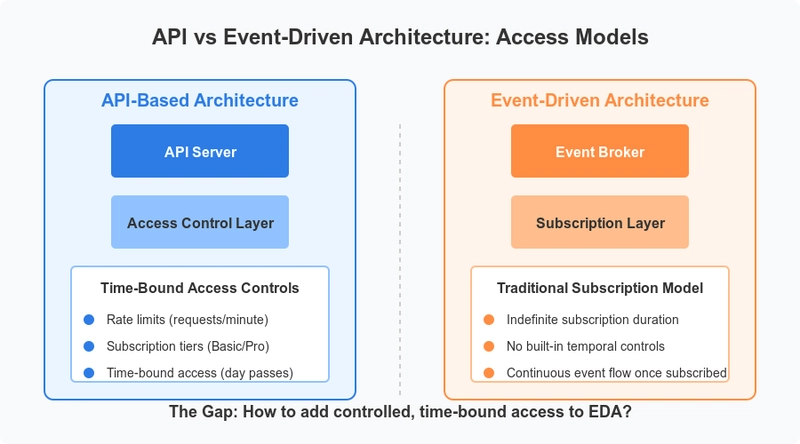
TL;DR
Event-driven architectures lack the time-bound access controls common in API systems. This creates challenges for monetization, resource management, and compliance. This series explores how to implement controlled subscription windows in EDA without sacrificing its core benefits.
Table of Contents
- The Fundamental Difference
- Why This Matters
- The Missing Link
- Looking Forward

Traditional API access controls vs. continuous EDA subscriptions
In today's digital landscape, organizations are increasingly adopting event-driven architectures (EDA) to handle real-time data flows and build responsive, scalable systems. Despite the numerous advantages of EDA—including loose coupling, scalability, and real-time responsiveness—there's a significant gap when it comes to implementing controlled access models that have long been standard in API-based architectures.
The Fundamental Difference
Event-driven architectures operate on a fundamentally different principle than traditional request-response APIs.
In an EDA:
- Subscribers register interest in event streams and receive continuous updates
- Publishers emit events without knowledge of who consumes them
- Once a subscription is established, events flow indefinitely
By contrast, API-based architectures offer well-established access control patterns:
- Rate limits ensuring fair resource usage
- Tiered subscription levels with varying access privileges
- Time-bound access windows (hourly/daily/monthly passes)
- Usage quotas that control consumption
This disparity creates a challenge for organizations moving toward event-driven models: How can we introduce controlled, time-bound event access in an event-driven world?
Why This Matters
The inability to offer controlled access windows for event streams poses several significant challenges:
1. Monetization Barriers
Without time-bound access controls, organizations struggle to implement flexible monetization models for their event streams.
Consider a financial data provider wanting to offer tiered access to market data—premium subscribers receive continuous data, while others might purchase day passes for specific trading sessions.
2. Resource Management
Unlimited, permanent subscriptions can lead to resource contention. Systems must manage a growing number of subscribers, potentially impacting performance for all consumers.
When event consumers maintain persistent connections without limits, both network and processing resources can become strained.
3. Compliance and Governance
Many industries face regulatory requirements around data access. The ability to grant and revoke access to sensitive event streams is crucial for maintaining compliance.
Time-limited access provides natural boundaries for audit purposes and helps enforce "need-to-know" principles.
4. Partner Ecosystem Development
Organizations seeking to build partner ecosystems need flexible models for sharing event data.
Time-limited access enables controlled trials and partnership arrangements without permanent data exposure.
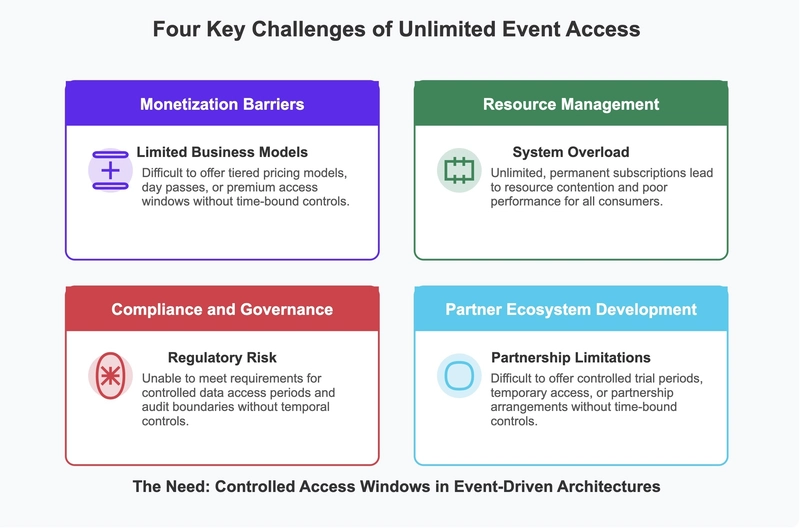
Four key challenges of unlimited event access
The Missing Link
What's needed is a bridge between these two worlds—a mechanism that preserves the advantages of event-driven architectures while introducing the controlled access patterns of API-based systems.
Such a solution would ideally provide:
- Subscription Windowing: The ability to define start and end times for event access
- Retention Policies: Controls for how long events remain available after generation
- Dynamic Access Controls: Real-time modification of access rights
- Seamless Integration: Minimal changes to existing event producers and consumers
Looking Forward
In the next article, we'll explore various approaches to solving this challenge, examining different architectural patterns that can introduce time-bound access controls in event-driven systems.
The convergence of these two worlds—the real-time power of event-driven architectures with the controlled access models of API-based systems—represents a significant opportunity for organizations to unlock new business models, improve resource utilization, and build more sophisticated event-driven ecosystems.
Stay tuned for Part 2, where we'll dive into practical implementation approaches!
What challenges have you faced implementing access controls in your event-driven systems? Share your experiences in the comments below










































































































































































![[The AI Show Episode 144]: ChatGPT’s New Memory, Shopify CEO’s Leaked “AI First” Memo, Google Cloud Next Releases, o3 and o4-mini Coming Soon & Llama 4’s Rocky Launch](https://www.marketingaiinstitute.com/hubfs/ep%20144%20cover.png)















































































































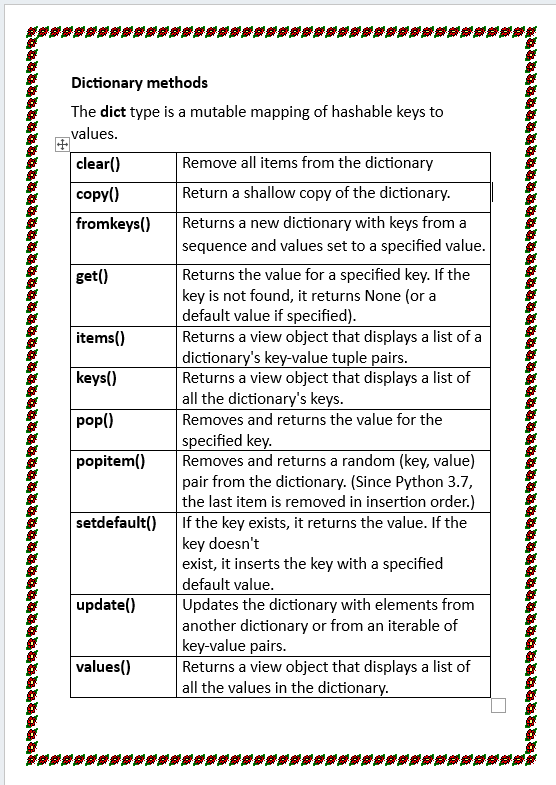

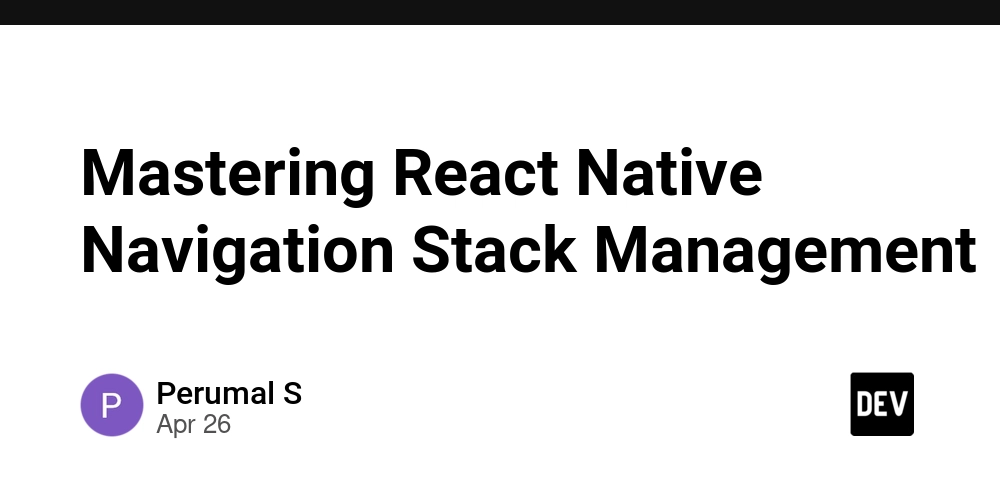
































































.jpg?width=1920&height=1920&fit=bounds&quality=70&format=jpg&auto=webp#)























































































_Olekcii_Mach_Alamy.jpg?width=1280&auto=webp&quality=80&disable=upscale#)













































































































![Apple Drops New Immersive Adventure Episode for Vision Pro: 'Hill Climb' [Video]](https://www.iclarified.com/images/news/97133/97133/97133-640.jpg)

![Most iPhones Sold in the U.S. Will Be Made in India by 2026 [Report]](https://www.iclarified.com/images/news/97130/97130/97130-640.jpg)
![Apple to Shift Robotics Unit From AI Division to Hardware Engineering [Report]](https://www.iclarified.com/images/news/97128/97128/97128-640.jpg)

































































































